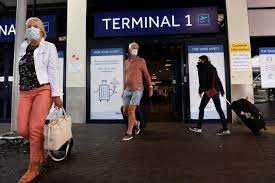When will Italy relax the restrictions on international travel?

Rome: Italy’s government has announced that it will relax some of the current coronavirus restrictions within the country from April 26th under a new emergency decree.
The new set of rules will remove the ban on domestic travel between regions in the lower-risk ‘yellow’ zone, and will allow people to move between higher-risk regions using a new domestic travel pass.
However, there was no mention of changing any of the current restrictions on international travel.
Almost all travel to or from Italy at the moment requires coronavirus testing and quarantine on arrival, with rules varying depending on the country you’re travelling from.
The Italian health ministry earlier this month said the current travel restrictions must stay in place until at least April 30th.
While we can expect the government to issue an update by then, it is not yet known if any rules will be changed.
So far the only indication from the government is that it hopes to allow tourism by early June if possible.
There has been no word on whether that would include tourism from countries outside Europe, or on what the rules would be for fully vaccinated people travelling to Italy.
Ministers have not yet confirmed whether Italy will adopt the European ‘Green Certificate’, allowing easier movement between member states for those who are fully vaccinated, or have tested negative within the 48 hours before travel.
The infection rate in Italy, while steadily falling, remains above 10,000 a day. Meanwhile the country’s vaccination rollout is still lagging behind not only the US and UK numbers, but also the European average.
Some Italian health experts have warned that reopening too soon could lead to a fresh spike in infections by early summer, potentially putting the tourism season at risk.
Italian authorities said they were taking a “calculated risk” in relaxing some rules within the country from next week.
Museums, theatres, bars and restaurants will only reopen in areas with lower infection rates, and a nationwide 10pm curfew is to stay in place until at least May.
Visiting second homes is allowed only if you can prove you had the right to enter the property before January 14th 2021, meaning it is not currently possible to rent a holiday home in Italy.
Further restrictions will continue to apply in areas classed as higher-risk ‘red’ and ‘orange’ zones.
And rules on social distancing and mandatory mask-wearing in public are likely to remain in place in Italy for a long time yet, as Italy does not expect to have the majority of the population vaccinated until autumn.
Italy’s Ministry of Foreign Affairs continues to advise residents to avoid travelling abroad if possible, warning that new restrictions may be introduced at short notice in response to rising cases or new variants.
Hopefully the restrictions lists will come to reflect the lower infections rates in international partners like the USA. The current infection rate there has dropped to 19/100K per day – lower than much of the European Union countries. Italy is currently at 23/100K per day. France is in the 40’s and other countries, like Poland and The Netherlands remain quite high.
41% of the USA’s population have been vaccinated with their first shot and 26% with their second dose, as opposed to Italy’s 19% and 7.9% for respective categories. The rest of the EU is running about 1/3 as many initial vaccinations as in the USA.
There are about 448 million people in the EU and 333 million in the USA, the former population posing more risk to the USA with entry from the former at this point. Understandably, we need to be cautious and watchful – mindful of the variants, maintaining mask wearing, reasonable social distancing and testing precautions. However, I think only around 10% of the world’s population has contracted COVID – this percentage was projected to run between 6 tp 10% initially. Of course it’s a huge number of individuals, and the tragedy of it is great – but, bear with me a moment.
That means that 90% of the world’s population isn’t infected and probably a good portion of that will remain COVID free. This is a huge number of people who need to live, work and move about the planet. If the percentage holds true for the USA, at least 190 million of the 210 million citizens over 18 years of age would be able to work, make money and travel – and possibly spread the potential for supporting commerce internationally.





